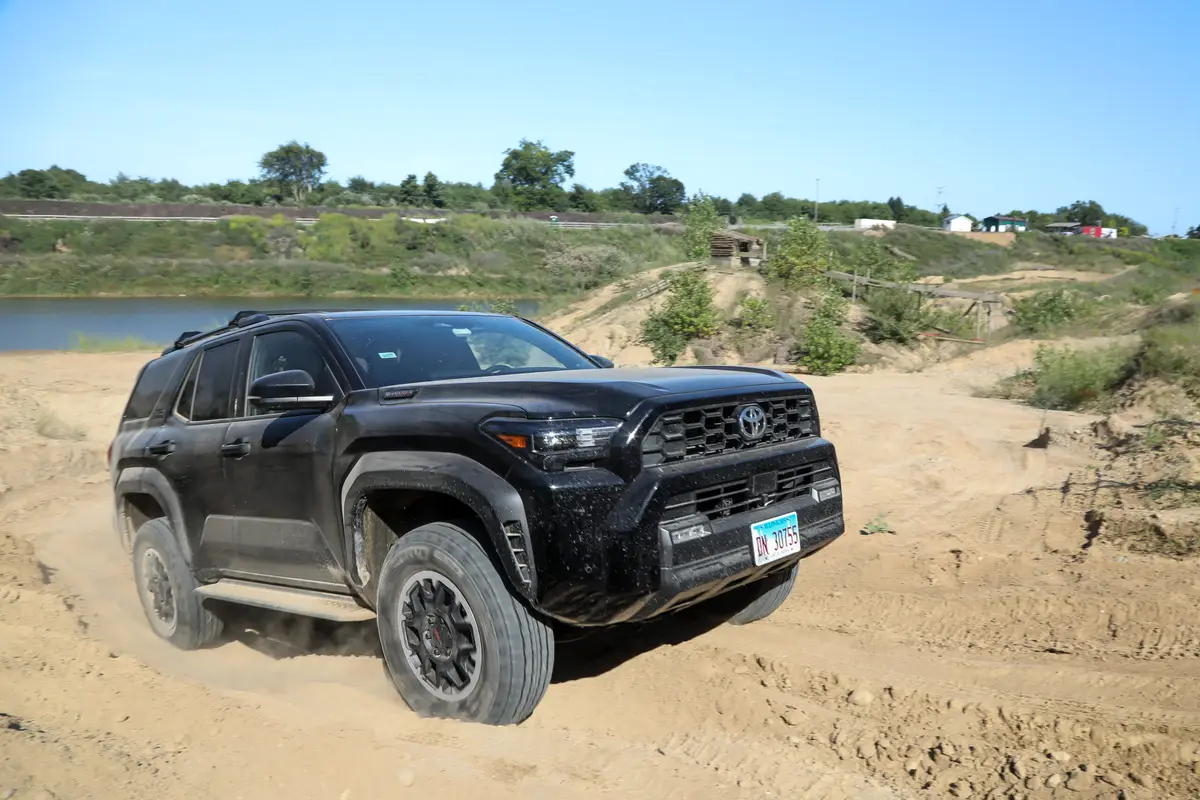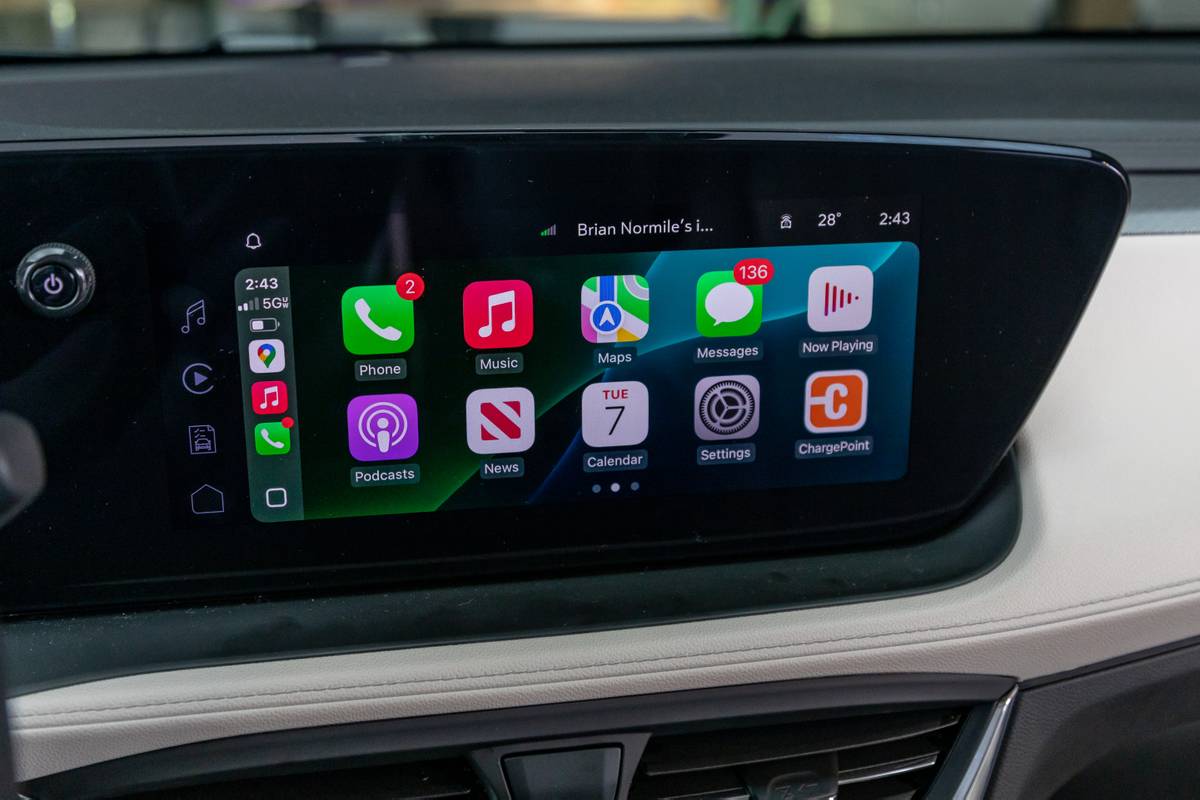Orlando Sentinel's view
For automakers, there is danger in resurrecting a hallowed nameplate from the past.
Do it wrong and you could tarnish the reputation of a time-honored classic and alienate the nostalgia buffs.
But get it right – as Chevrolet has done with the head-turning Impala SS – and you’ll get orders for more cars than you can build.
Before the new Impala SS even rolled off the assembly line, Chevrolet headquarters in Warren, Mich., was bombarded with more than 5,000 orders for the car.
Support for the new Impala SS began at auto shows in 1992, where a concept of the car began to draw attention. At that time, there was no plan to build the car.
But when enthusiasm for the car started to build, Jim Perkins, Chevy’s general manager, huddled with dealers, found out they wanted to sell the car, and then gave the boys over in production the thumbs up. That’s how the Impala SS was resurrected.
Although the new Impala SS is based on the conservative Chevrolet Caprice sedan, it is a radically different car.
The Impala name first appeared on a Chevy Bel Air in 1958. It became a separate model in 1961. Throughout the ’60s, the Impala SS (for Super Sport) came with large V-8 engines, offered tire-smoking performance and boasted conservative but attractive styling. The car was designed to appeal to middle-aged, performance-oriented drivers.
The model was discontinued after the 1969 model year.
For the new Impala, Chevy’s mechanics stuffed a Corvette engine under the hood. Then they engineered a radical suspension system and created a sporty interior. And finally, they designed a unique exterior styling treatment with huge wheels, a special grille and other cosmetic touches.
After one week and nearly 400 miles in the 1994 Impala SS, I can tell you that the ’90sversion does not veer far from the original formula.
PERFORMANCE
The heart of the Impala SS is a Corvette LT1 V-8 engine and a computerized four-speed automatic transmission. No other drivetrain is available.
Chevrolet rates the Impala’s 350-cubic-inch V-8 at 260-horsepower, making it the most powerful four-door sedan on the road for less than $25,000.
In the Corvette, the LT1 engine makes 300 horsepower; in the Pontiac Firebird and Chevrolet Camaro, it makes 275 horsepower. In all three of those cars, the engine rumbles and shakes with anger.
Not so in the Impala SS. The car idles very smoothly and runs very quietly.
And the performance is civilized, too. The Impala SS remains quiet and stable as it gains speed.
It is only when you step hard on the accelerator at a low speed that you can hear the engine sucking in air as it winds up. It’s a nice sound, one that appeals to a person’s sporting nature.
Chevy has done its marketing homework. The Impala is designed for aging baby boomers who want more room and who like a full-size car with a lot of power. Chevy knows that younger buyers aren’t going to cho ose the Impala SS when, for about the same money, they can have a Chevy Camaro Z28.
When it comes to performance, the Impala SS delivers. No official 0-to-60 mph times are available from Chevy, but Motor Trend magazine says the Impala SS will make that trip in just 7.1 seconds.
Not bad for a car weighing 4,218 pounds.
The transmission is nothing short of excellent. Most of the time the shifts up through the gears are close to undetectable. However, when you pass slower traffic at about 40 mph, you can feel the gearbox downshift from fourth to third, sometimes harshly.
HANDLING
Incredible is the only word that can describe the way the Impala SS slices through curves. No big car that I’ve ever driven handles as competently as the Impala SS.
The secret? A very firm and stiff suspension system that keeps the body straight. At each wheel, Chevy has installed a special high-performance gas-charged shock and a heavy duty coil spring.
Four-wheel anti-lock disc brakes are capable of hauling the Impala SS to an effortless stop from high speeds. For instance, it takes just 120 feet to stop the Impala SS from 60 mph, according to Motor Trend.
The anti-lock system is one of the best yet from GM. You feel little feedback at the brake pedal.
The power-assisted steering is sharp and crisp, making lane changes and sharp turns a breeze.
Fat, 17-inch B.F. Goodrich radial tires mounted on special Impala SS-only aluminum wheels complement the handling and the car’s appearance.
On the down side, I noticed that the stiff suspension system causes the car to shudder slightly when a small bump is hit. But that’s a small price to pay for such stellar handling.
FIT AND FINISH
GM cars are starting to feel great again.
The shoddy workmanship and slap-’em-together way GM built cars in the ’80s is gone.
The Impala is screwed together tightly. The gaps between the fender and doors, hood and trunk, and interior panels are all uniform and straight. Nothing was loose on the test car, and the doors closed with that reassuring solid thump, a characteristic of GM’s solidly built products of years past.
Every power accessory worked flawlessly. The controls were designed well, and they felt good to the touch -no cheap materials here.
The test car was fully loaded. It came with power seats, mirrors, windows and door locks, plus a CD player, air conditioning and cruise control.
As much as I liked the car, I still think there is room for improvement in the way some of the Impala’s parts are designed.
The door-mounted outside mirrors are too small and seem to be poorly placed. Getting a good view of what’s behind you can be a bit of a chore.
Also, the rearview mirror on the windshield doesn’t seem big enough; you can’t see the whole area behind the car unless you move your head back and forth.
A few other improvements also could be made: The shifter should be on the floor in the console, not on the steering column, and it will be on the floor in ’95 models, said Chevrolet spokesman Tom Hoxie in Michigan.
The Impala has a computerized speedometer readout and analog fuel and temperature gauges, carried over from the Caprice. It really needs a full gauge package, one that includes temperature and oil gauges and a tachometer.
Also, I would like to see some nicely styled chrome-tipped exhaust pipes. Two plain pipes hang just under the rear edge of the bumper; some special tips really would set off the back-end appearance.
Lastly, the Impala SS comes only in black. The logos on the side of the car also are black; you can’t read them or make them out unless you stare intently. If the logos were red or chrome, they would stand out better against the black paint.
A special set of comfortable, leather bucket seats, divided by a console containing cup holders, gives the Impala SS interior its classy, sporty feel.
The dash contains two air bags and a centrally located pod containing the radio and air conditioner controls.
The back seat area is huge. Impala logos emblazoned on the upholstery give the car a very classy and special look.
In my book, the Impala SS is just a few minor cosmetic upgrades away from being a modern-day classic. In any case, the new Impala SS is a car that deserves to wear such a cherished name.
Truett’s tip: The Impala SS offers incredible power; excellent handling; a smooth, quiet ride; and a supremely comfortable interior. It just may be the best full-size high-performance sedan on the road for under $25,000.
Latest news



